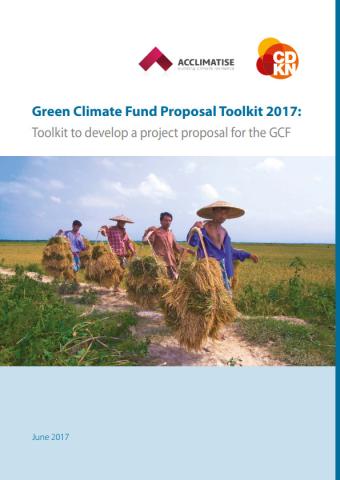
Responding to climate change challenges requires collective action from all countries, governments, cities, communities, businesses and private citizens. With US$10.3 billion currently pledged, the Green Climate Fund (GCF) is the world’s largest fund dedicated to the fight against climate change. Designed to be the main financial instrument to mobilise US$100 billion per year by 2020 from both public and private sources, the GCF is the centrepiece to address the pressing mitigation and adaptation needs of developing countries.
What does the GCF support?
The GCF aims to support developing countries in achieving a paradigm shift to low-emission and climate-resilient pathways. This is achieved by funding innovative and transformative low emission (mitigation) and climate-resilient (adaptation) projects and programmes developed by the public and private sectors to contribute to the implementation of national climate change priorities in developing countries. While it is relatively easy to tell what a mitigation project or programme is (i.e. its contribution to the reduction of greenhouse gases in the atmosphere, and/or whether it increases the capacity of an ecosystem to absorb them), the blurred line between a general development project and an adaptation project has been a contentious issue in the international climate finance debate, including at GCF Board meetings. The relevant question is not whether a project is (also) a development project, but whether the project contributes to adaptation (i.e. what the adaptation/additionality argument is). Crosscutting projects that deliver co-benefits in terms of both mitigation and adaptation are also eligible for funding.
What are the key steps to put together a GCF proposal?
Project proponents can follow ten key steps that will guide them through the preparation and submission of a fully fledged funding proposal. These steps may be undertaken iteratively rather than strictly sequentially. A visual overview of the stepwise approach is provided in Figure 1. This toolkit presents each of these steps alongside guidance on the tools and methods needed to put a funding proposal together and fill in all sections of the GCF proposal template. For each step we provide practical examples of how to demonstrate GCF requirements, using a funding proposal developed by XacBank (Funding Proposal 028) to support a funding proposal ‘Business loan program for GHG emission reduction’ approved by the GCF Board in December 2016.
This toolkit aims to guide project proponents’ understanding of the key considerations to take into account to fulfil the GCF’s requirements when developing funding proposals, by acquainting themselves with the following: 1) Essentials to know before developing a GCF project; 2) Key Project design elements; 3) The GCF proposal template; 4) How to put together a GCF funding proposal: a stepwise approach; 5) The GCF project cycle; 6) How to get started?; 7) Support available for the full proposal preparation.
